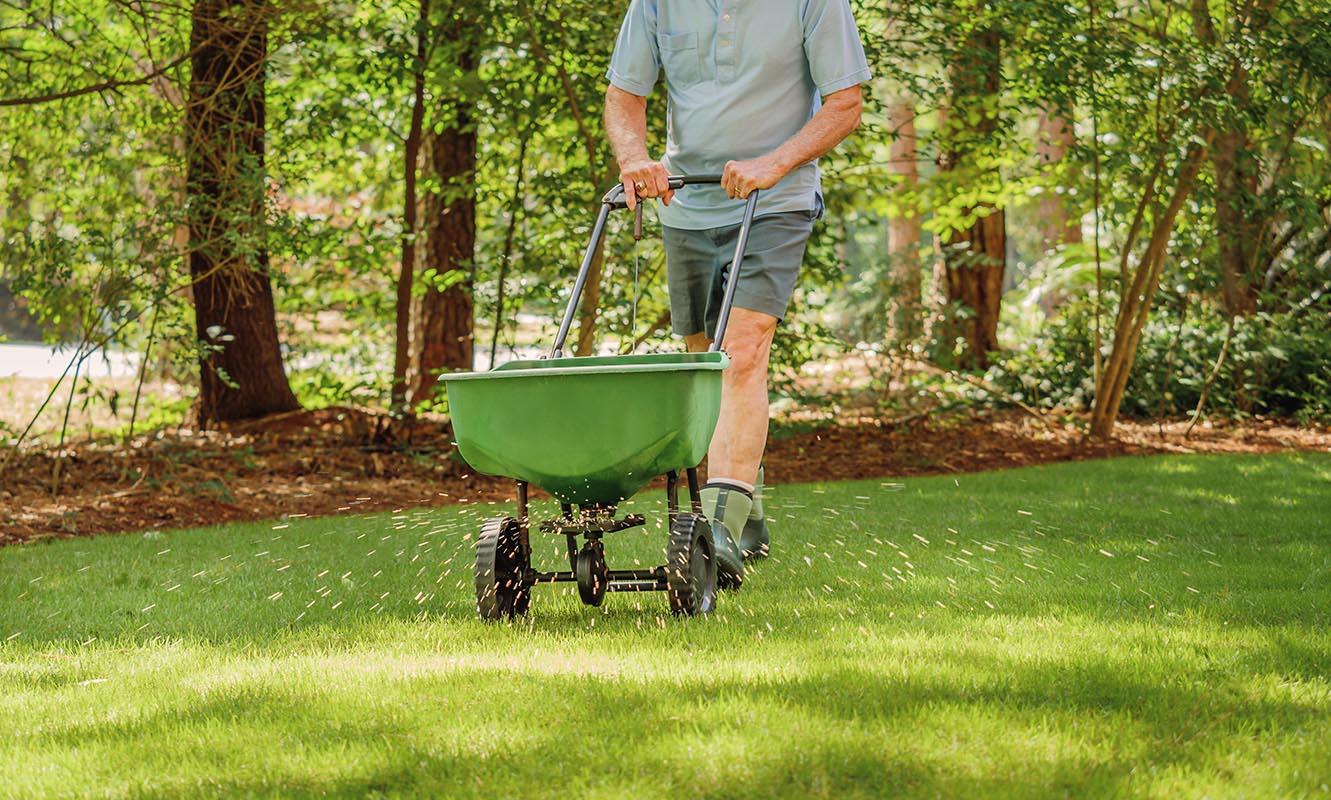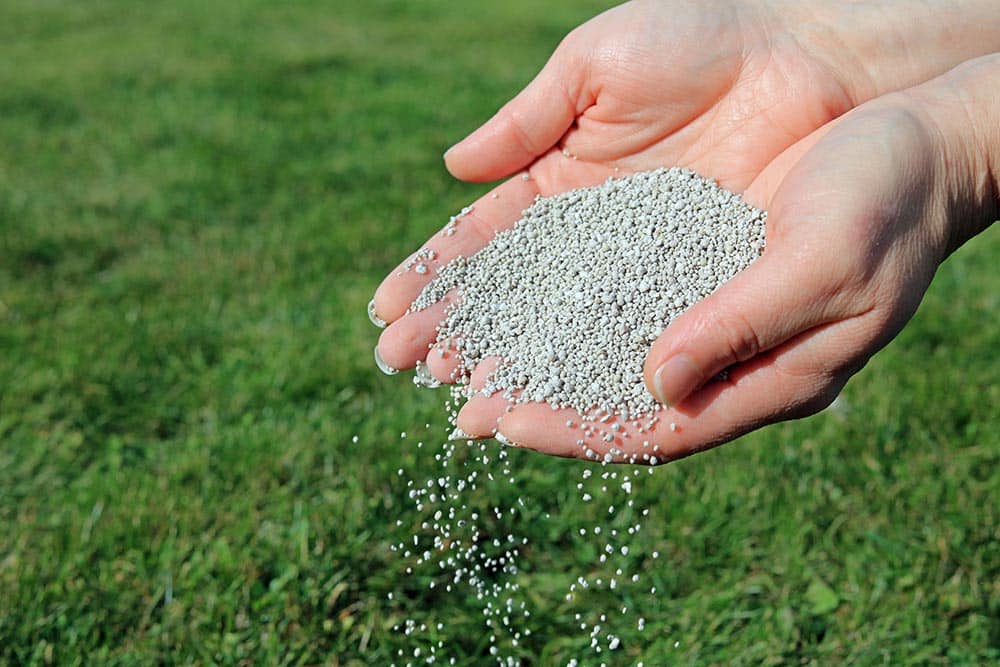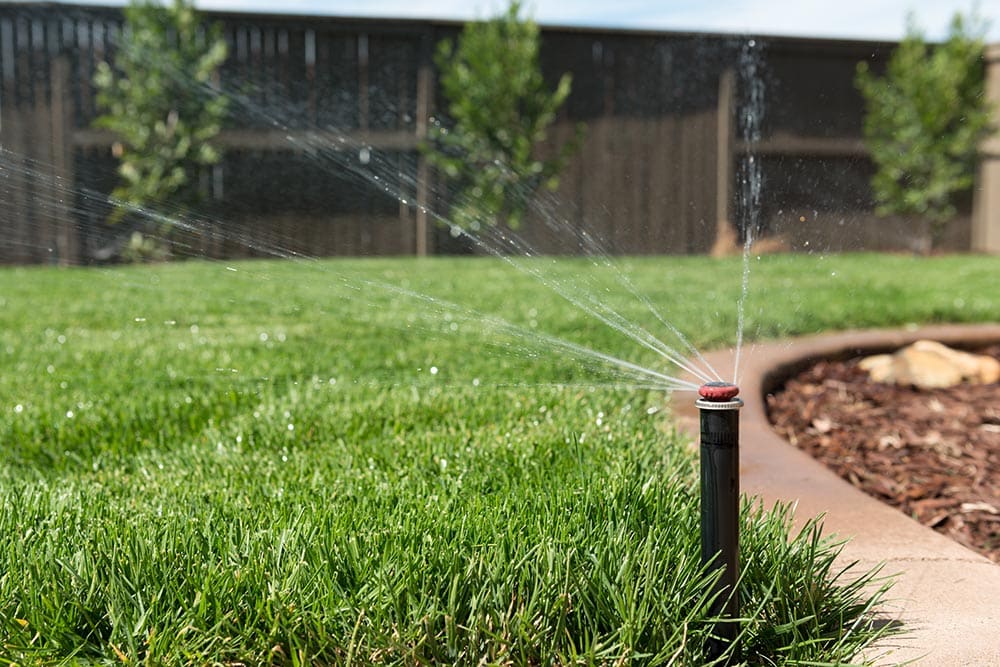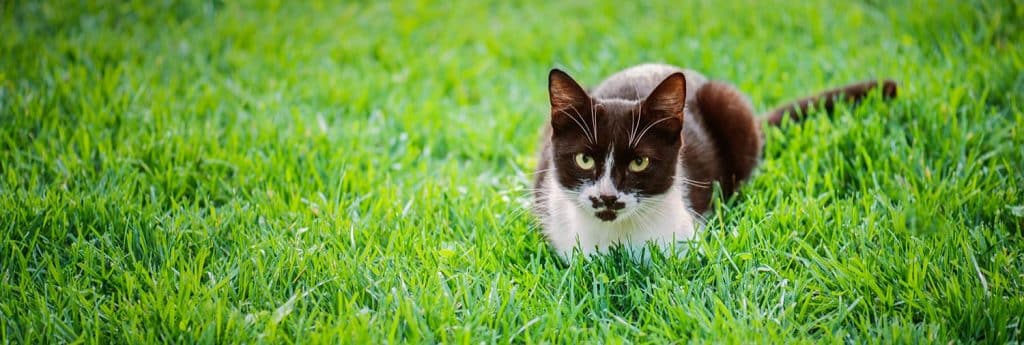Lawn Care Programs from Strader's
A thick, healthy lawn not only looks amazing, but a thicker lawn prevents weeds because the weed seed can’t make seed-to-soil contact. So how do you get your best lawn this summer?
Much of it has to do with the lawn fertilizer you use. That’s why your Strader’s has all the popular lawn care programs including Scotts 4 Step Program, GreenView’s two-step program, Fertilome products and Espoma organic treatments. How do you know which one to use? The lawn care experts at Strader’s can help, of course, but here’s some knowledge to help you decide.

Let's Spread Some Knowledge
What do the numbers mean?
If you read the back of most treatments, you’ll likely spot its NPK numbers – the ratio of nitrogen, phosphorus and potassium (K is the element symbol for potassium). Nitrogen is for greenery and growth. Phosphorus is for the roots of your grass and blooms, and is commonly found in new lawn starter fertilizer but not in regular lawn foods. Potassium is great for general plant health.

How much lawn fertilizer do I need?
Measure the length and width of your lawn to get the square footage. This can be an approximation, of course, but it helps figure out how much fertilizer you will need. Fertilizers are typically available in bags for lawns that are 5,000 square feet or 15,000 square feet in size.
When you’re ready to apply it, follow the rates on the bag that apply to the spreader you’re using. A drop spreader drops fertilizer straight down so you run it like a vacuum cleaner. A rotary spreader dispenses on both sides in a fan-like pattern. Be careful around your flower beds with these ones as you don’t want weed treatment on your flowers! It’s also very important to remember that too much fertilizer can burn your lawn, so use with caution.
What do I apply when?
My favorite answer is to use the smile method – S for St. Patrick’s Day, M for Memorial Day, I for Independence Day, L for Labor Day and E for End of season. This works for the four-step application programs.
The first application/early spring – crabgrass preventer is applied at around the time of your first mowing when soil temps are around 50 degrees. This should be done by mid-April. Allow 6 to 8 weeks between applications, so a weed preventer applied mid-April means you can’t apply the weed control until mid-June. The weed preventer in the first application lasts for 4 months so it will stop seeds from maturing until July. This means all seeds – grass seed, dandelion seed, etc. – will germinate, but die early.

To water or not to water?
Fertilizers with weed preventers (like the first application in early spring) need to be watered in to activate the product. This is also true of grub controls and other insecticides. They should be watered in within 24 hours so they don’t blow away. Watering in also keeps the fertilizer in the soil and not on your pets paws!
What about grubs?
To prevent grubs, we recommend applying Grubex in April. It works slowly but stays in the plant for 4 full months. Another option is Milky Spore – an organic bacteria-based solution. It needs to be applied per label directions for 2 years but then lasts for 10 years in the soil.
When can I put down new grass seed?
Grass seed is typically applied in the spring or fall (April or September). We carry several brands and different varieties of grass seed and we can help you choose the best one for your situation. Starter fertilizer should be used with any grass seed because it won’t grow without nutrition.
For smaller areas or patching we recommend Patchmaster or EZ Seed (these contain seed, fertilizer and mulch). You cannot apply crabgrass preventer and grass seed together unless you only seed in early spring and hold off on fertilizer with crabgrass preventer. Traditional crabgrass preventer will prevent you grass seed from germinating and stays in the soil for 4 months. Any new grass must have grown long enough to be cut four times before you can use weed killer on it.
What about kids and pets?
Always read the label and follow directions! Even the poultry manure in organic fertilizer is not safe if ingested. It’s best to water any fertilizer in before you venture out. This is tricky with fertilizer containing weed control because you have to wait 24 hours, then water it in before it is safe to walk on. If this creates issues with outdoor activities in your yard, try treating the front yard and back yard separately.

Overwhelmed?
Don’t be! We always have lawn care experts on hand to help answer your questions and help you grow your thickest, healthiest lawn ever.












